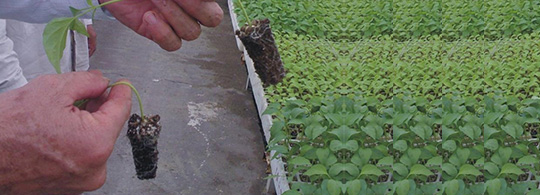Ferticell Salinity Carbo
| TECHNICAL DATA SHEET | |
|---|---|
| Ferticell-Salinity carbo |
The water quality factors that most influence infiltration are the total content of salts and the ratio of sodium to calcium and magnesium (SAR). In this sense, the infiltration will increase with increasing electrical conductivity and decrease with increasing SAR.
Chlorides and sulphates are the most common causes of the formation of saline soils, of the properties they present and stress on plants. Chlorides are highly soluble salts with high toxicity. Sodium chloride is the most common salt in saline soils. Efflorescence formed on the surface of these soils during the dry season has a salty taste. The removal of this salt requires washing in good drainage conditions. The presence of sodium chloride affects the solubility of other salts by common ion effect.
The recovery of saline soils in order to reduce the percentage of absorbed sodium is achieved by applying chemical improvers. With the decrease of PSI (percentage sodium interexchange), the sodium adsorbed on the complex is substituted for calcium, to reduce the PSI to values that do not cause damage to the structure. The usual method is the addition of chemical enhancers which contain calcium or move part of that existing in the soil.
The recovery of sodic soil through the use of such products is based on the solubility of calcium in the soil or the addition of soluble calcium in order to replace the sodium in the complex.
Ferticell-Salinity is designed to promote better plant soil relations in terms of use of saline water or soils and have the advantage over those described above, of being easy to use, since Ferticell-Salinity can be applied during the growing season through fertirrigation.
The action mechanism of organic acids in Ferticell-Salinity is based on the elevation of the CIC (capacity interexchange Cationic), contributing to the decrease in salinity. They are involved in the stability of the exchange complex, complementing the effects of calcium, resulting in better soil structure. They encourage the development of soil microorganisms, a source of energy in chemical and biological processes such as the oxidation of sulphur.
Acid molecules interact with insoluble calcium and magnesium salts arising from the movement caused by excess sodium, constituting soluble carboxylates. These carboxylates by difference in ionic radius between the divalent cations Ca + +, Mg + + and Na +, which is saturating the clay-humic soil, form soluble sodium carboxylates which are displaced by water drainage, leaving the complex saturated with divalent cations.
In some areas there are problems of water and soil hardness, which affect crops. Affected areas are easy to differentiate due to withered state of growth and low crop productivity. The application of water and soil softening products are an alternative for handling and controlling this problem.














